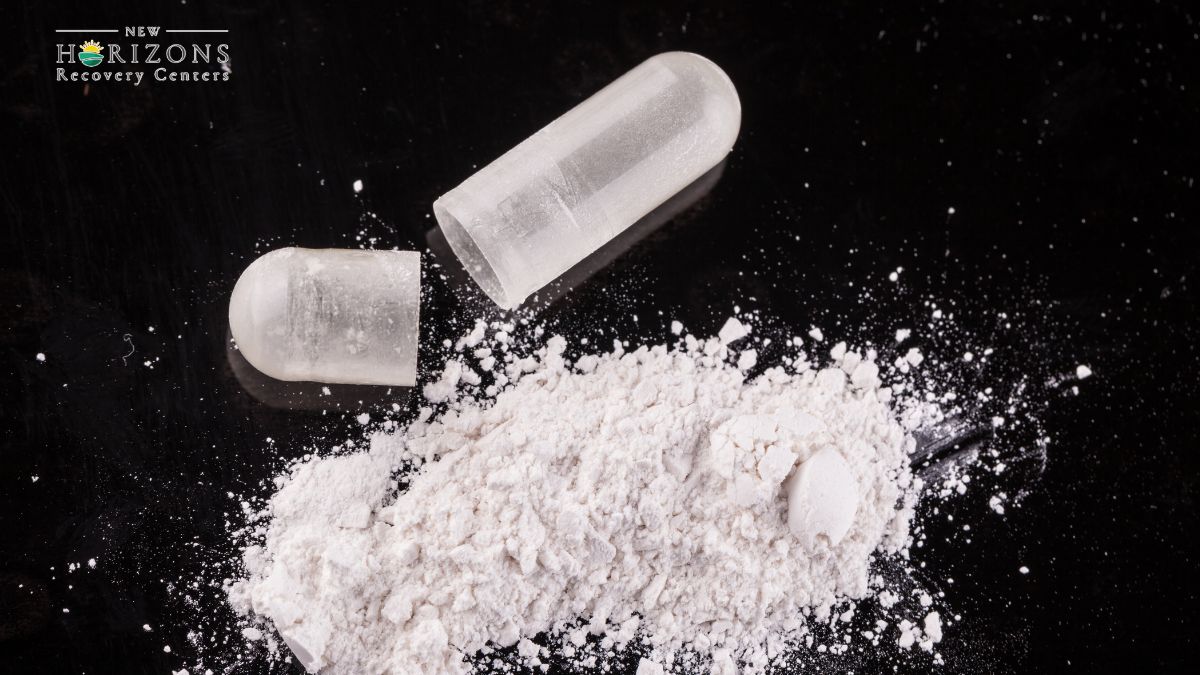
The Link Between Substance Abuse and Domestic Violence
Understanding the connection between addiction and domestic violence is crucial for addressing both issues effectively. Substance abuse can act as a catalyst for abusive behavior, while domestic violence can lead to increased substance use among victims.
Impact of Substance Abuse on Abusive Behavior
Substance abuse significantly increases the likelihood of someone engaging in abusive behavior. Individuals under the influence of drugs or alcohol may exhibit heightened aggression and a diminished ability to control impulses. This can lead to violent actions and an escalation of pre-existing patterns of abuse. According to Southern California Sunrise Recovery Center, the use of substances can enhance violent behavior, making it a critical factor in many domestic violence situations.
Substance TypeLikelihood of AbuseAlcoholIncreases aggression, lowers inhibitionsStimulants (e.g., cocaine, meth)Heightened aggression and paranoiaOpioidsMay cause emotional numbness, leading to unpredictable behavior
Effects of Domestic Violence on Substance Use
Victims of domestic abuse often turn to substances as a means of escape from their traumatic experiences. The emotional and psychological impact of domestic violence can lead to the development of mental health disorders, such as PTSD and panic disorders, which can further increase the likelihood of substance abuse.
Coercion into substance use is also a common dynamic in abusive relationships. Abusers may force their partners to use drugs or alcohol, further entrenching the cycle of addiction and violence. The table below illustrates the relationship between domestic violence and substance abuse in victims:
Scenario and Effect on Substance Use
Coercion by abuser - Increased use of drugs/alcohol
Psychological trauma - Higher likelihood of developing a substance use disorder
Escape mechanism - Use of substances to numb emotional pain
The interplay between addiction and domestic violence creates a complex web that can be difficult for individuals to navigate. Recognizing these patterns is essential for effective intervention and support. For more on recovery strategies, check our article on strategies for maintaining sobriety.

Factors Influencing Addiction and Domestic Violence
Understanding the factors that influence both addiction and domestic violence is crucial for effective intervention and recovery. This section examines two significant elements: coercion into substance abuse and the interplay between mental health disorders and substance use.
Coercion into Substance Abuse
Coercion into substance use is a prevalent issue in abusive relationships. Victims of domestic abuse may be pressured by their partners to engage in drug or alcohol use. This manipulation often aims to control the victim further, making it challenging for them to escape the cycle of violence. Studies indicate that women who abuse alcohol and drugs are more likely to become victims of domestic violence, and this risk is often exacerbated by their partners' substance abuse issues rather than their own.
The coercion can lead to a troubling cycle where victims turn to substances as a coping mechanism for the trauma they endure. This self-medication can accelerate the development of substance use disorders, creating a complex relationship between addiction and domestic violence.
Coercion FactorsImpactPartner PressureIncreased substance useControl TacticsDependency on substancesCycle of ViolenceEscalation of abuse and addiction
Mental Health Disorders and Substance Abuse
Mental health disorders significantly influence the relationship between addiction and domestic violence. Many victims of domestic violence develop mental health issues such as PTSD, anxiety, and depression due to their traumatic experiences. These conditions can lead to substance misuse as a form of self-medication to alleviate emotional pain.
Moreover, studies show that victims of domestic violence are more likely to abuse drugs or alcohol to cope with their trauma. This pattern creates a feedback loop where substance use exacerbates mental health problems, making it difficult for individuals to break free from both addiction and abusive relationships.
Mental Health ImpactSubstance Use RiskPTSD and AnxietyIncreased likelihood of substance abuseDepressionSelf-medication with alcohol or drugsTrauma ResponseHigher rates of addiction
Addressing these factors is essential for developing effective treatment approaches. Interventions must focus on both mental health support and strategies for maintaining sobriety, while also considering the impact of coercion and control in abusive relationships. For more insights into recovery techniques, explore our resources on addiction recovery milestones and cognitive behavioral therapy for addiction.

Patterns in Substance Abuse and Domestic Violence
The interconnectedness of substance abuse and domestic violence reveals significant patterns that affect both victims and perpetrators. Understanding these patterns can aid in the development of effective interventions and support systems.
Presence of Substance Abuse in Abuser and Victim
Substance abuse may be present in the abuser, the victim, or both individuals in a partnership where domestic violence occurs. Excessive drug or alcohol use can increase the risk of becoming a victim of domestic abuse or an abuser themselves. According to Southern California Sunrise Recovery Center, there is a notable correlation between substance misuse and domestic violence.
Research indicates that between 25% to 50% of men who commit acts of domestic violence have substance abuse problems. Furthermore, as many as 80% of child abuse cases are associated with the use of alcohol and drugs. Women who engage in substance abuse are also more likely to become victims of domestic violence.
Substance Abuse in RelationshipsPercentageMen committing domestic violence with substance problems25 - 50%Child abuse cases linked to substance use80%Women with substance abuse who become victimsHigh correlation
Simultaneous Occurrence of Addiction and Violence
There is a strong relationship between substance abuse and domestic violence, with both issues often co-occurring. Studies show that perpetrators and survivors of abuse have high rates of addiction. Approximately 25% to 50% of intimate partner abusers struggle with substance use disorders. As an abuser's addiction escalates, both the frequency and severity of their abusive behavior tend to increase.
Substance misuse is also prevalent among individuals exposed to intimate partner violence (IPV). Women who experience IPV are at a heightened risk of transitioning from substance misuse to substance use disorder (SUD). This transition often results in greater SUD symptom severity, leading to lasting mental and physical health consequences.
Recent studies have highlighted that around 60% of substance-abusing men with intimate partners report at least one instance of intimate partner violence in the year prior to program entry, which is significantly higher than rates observed in representative surveys of couples [6].
Understanding these patterns is crucial for addressing the intertwined issues of addiction and domestic violence, paving the way for effective strategies and support systems for recovery.
Understanding the Complex Relationship
The relationship between addiction and domestic violence is multifaceted and deeply intertwined. Understanding the triggers that lead individuals into substance abuse and the challenges faced in breaking the cycle of violence and addiction is crucial for effective intervention.
Triggers and Escapism
Substance abuse can significantly increase the likelihood of someone becoming abusive. The use of drugs or alcohol may enhance violent behavior and intensify pre-existing patterns of abuse. Conversely, the effects of domestic violence may lead victims to turn to substances as a means of escape, thereby increasing their chances of developing an addiction.
Victims of domestic abuse often experience overwhelming emotional pain and trauma. This distress can drive individuals to seek solace in substances, creating a dangerous cycle. Additionally, victims may be coerced into using drugs or alcohol by their abusive partners, further entrenching them in a pattern of dependency and violence. Mental health disorders such as PTSD and panic disorders are prevalent among victims, and these conditions can also contribute to substance abuse [1].
Challenges in Breaking the Cycle
Breaking free from the cycle of addiction and domestic violence presents numerous challenges. The complex relationship between these two issues often creates a dangerous environment that is difficult to escape. The connection remains unclear, with researchers debating whether substance abuse directly disinhibits normal sanctions against violence or if it produces changes in thinking, physiology, emotion, motivation, or interpersonal power.
Moreover, societal norms that indirectly excuse violence against women can exacerbate the situation. Witnessing or experiencing family violence during childhood is a recognized risk factor for both domestic violence and substance abuse. As individuals attempt to navigate their recovery, they often face stigma, lack of support, and limited access to resources, making it more challenging to achieve lasting change.
In order to address these intertwined issues, comprehensive treatment approaches that encompass both addiction recovery and support for domestic violence survivors are essential. Integrated programs that focus on healing trauma, building coping mechanisms, and fostering healthy relationships can help individuals break the cycle and find a path to recovery. For those looking to explore addiction recovery milestones or detoxification methods, support systems and resources are available to aid in this journey.
Statistics and Realities
Understanding the statistics surrounding addiction and domestic violence reveals the severity and prevalence of these intertwined issues.
Prevalence of Domestic Violence
Domestic violence is a critical issue in society. In the United States, a woman is beaten every 15 seconds. Approximately 30 percent of female trauma patients have experienced domestic violence, leading to medical costs exceeding $44 million annually for injuries inflicted by intimate partners. The Department of Justice estimates that around 1,500 homicides and manslaughter cases between intimate partners occur each year in the U.S., with more than 1,200 of these involving female victims. Additionally, about 250,000 emergency room visits annually involve victims of intimate partner violence (IPV).
StatisticValueWomen beaten every 15 seconds1Female trauma patients with domestic violence history30%Annual medical costs for injuries$44 millionHomicides between intimate partners annually1,500Emergency room visits for IPV250,000
Impact on Children and Families
The effects of domestic violence extend beyond the immediate victims. An estimated three million children witness acts of violence against their mothers each year. Many of these children learn to view violent behavior as an acceptable means of expressing anger and frustration. This cycle of violence can perpetuate itself, as children who witness domestic violence are at a higher risk of experiencing or perpetrating violence in their own relationships.
Studies have shown that roughly 60% of substance-abusing men with intimate partners report at least one instance of intimate partner violence during the year before entering treatment programs. This statistic indicates a significant overlap between substance abuse and domestic violence, highlighting the complex relationship between these issues.
The connection between addiction and domestic violence calls for comprehensive strategies to address both issues effectively. Programs focusing on addiction recovery milestones and cognitive behavioral therapy for addiction can play a crucial role in breaking this cycle, ultimately leading to healthier families and communities.
Interventions and Support
Effective interventions and support systems are critical in addressing the interplay between addiction and domestic violence. It is essential to provide comprehensive treatment approaches and to address the underlying trauma and mental health issues that often accompany these challenges.
Treatment Approaches
Treatment for individuals dealing with both substance abuse and domestic violence must be multifaceted. Programs should incorporate various therapeutic modalities to address the complex issues at hand. Here are some common treatment approaches:
Treatment Approach and Description
Cognitive Behavioral Therapy (CBT): CBT helps individuals identify and change negative thought patterns and behaviors associated with their substance use and experiences of violence. This approach is effective in creating healthier coping strategies. For more information, visit our article on cognitive behavioral therapy for addiction.
Detoxification Methods: Detoxification is often the first step in treating substance use disorders. Safe detoxification methods help individuals manage withdrawal symptoms and prepare for ongoing treatment. More details can be found in our article on detoxification methods.
Support Groups: Peer support groups, such as Alcoholics Anonymous (AA) and Narcotics Anonymous (NA), provide a community for individuals in recovery. These groups emphasize shared experiences and accountability.
Trauma-Informed Care: This approach recognizes the impact of trauma on individuals and focuses on creating a safe environment for healing. It incorporates understanding trauma's role in addiction and provides support that is sensitive to these experiences.
Implementing these treatment approaches can significantly improve outcomes for individuals facing both addiction and domestic violence.
Addressing Trauma and Mental Health
Addressing trauma and mental health is crucial for individuals affected by domestic violence and substance abuse. Victims often endure immense trauma, leading to increased rates of depression, anxiety, and post-traumatic stress disorder (PTSD). Some survivors may resort to substance use as a coping mechanism, which can hinder their recovery if not properly addressed.
Substance misuse in individuals exposed to intimate partner violence (IPV) is commonly a method of coping with emotional and physical pain. Self-medication with alcohol and drugs can escalate the progression to substance use disorders.
The mental health of individuals facing these circumstances must be prioritized. Effective interventions include:
By focusing on both treatment approaches and the mental health needs of individuals affected by addiction and domestic violence, it is possible to create a supportive environment that fosters healing and recovery.





-ink.jpeg)
-ink.jpeg)
